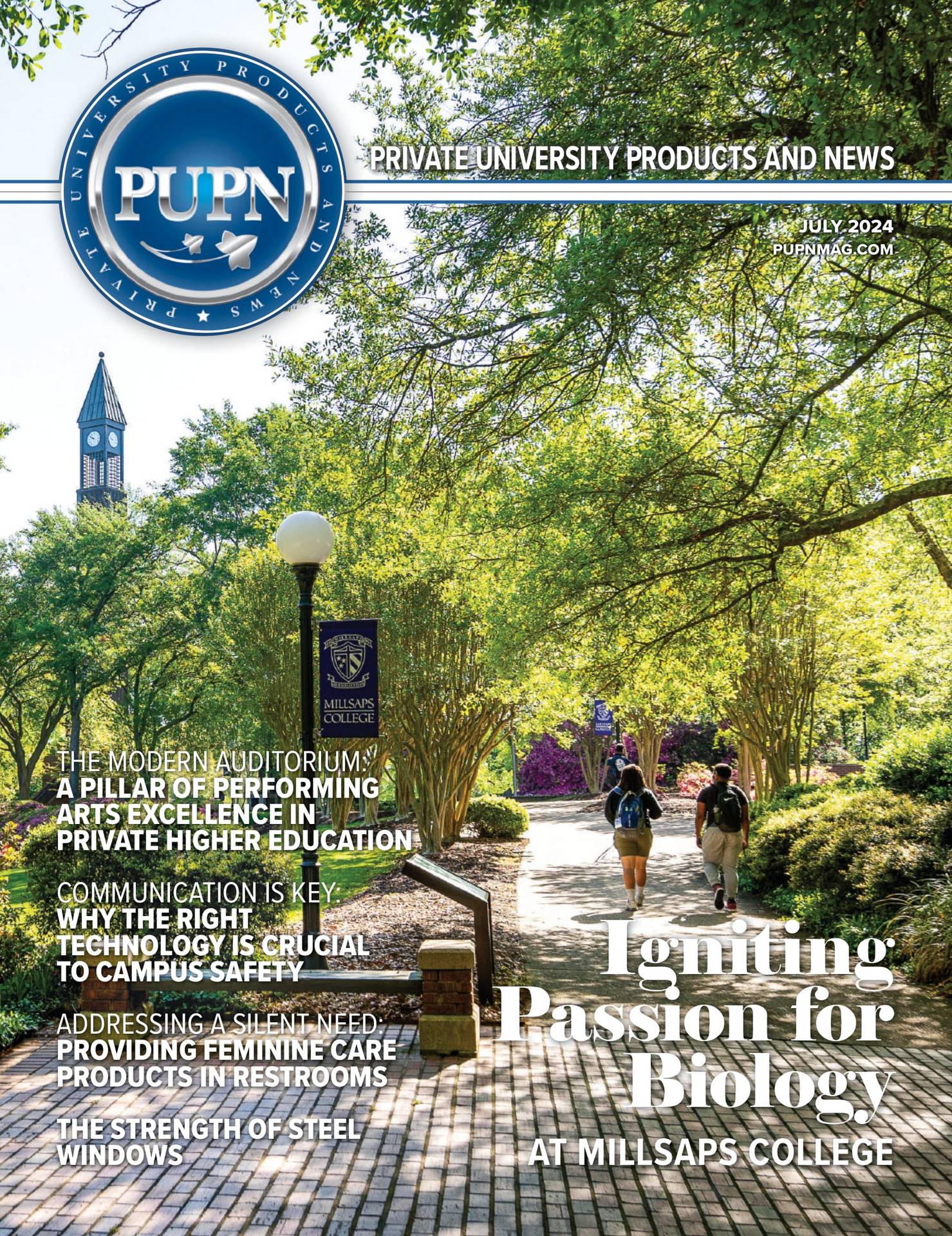Before your next building renovation, consider these seven flooring factors you’ll want to consider.
1. Durability and Longevity
When it comes to choosing flooring for private higher education facilities, durability should be a top priority. These institutions experience high foot traffic on a daily basis, sure to wear down less-robust flooring materials. To ensure your investment stands the test of time, consider options like luxury vinyl tile (LVT), known for its durability and available in a wide range of designs and colors. It’s resistant to stains, scratches, and moisture, making it a popular choice for educational spaces. Porcelain tiles are also incredibly durable and can withstand heavy foot traffic. They are also easy to clean and maintain. Finally, consider rubber flooring, which is not only durable but also provides excellent slip resistance. It absorbs impact and noise, making it ideal for classrooms and common areas.
For more in-depth information on the durability of various flooring options, the National Floor Safety Institute is a valuable resource.
2. Maintenance and Cleanliness
Keeping a private higher education facility clean is essential for the health and well-being of students and staff. To ensure easy maintenance and cleanliness of your flooring, consider hardwood, laminate, and vinyl flooring for easy care. Also be mindful of your flooring’s stain resistance. High-traffic areas are invariably high-spill areas, so carpet, while comfortable, is less practical for common areas.
In educational settings where hygiene is critical, consider flooring materials with anti-microbial properties to inhibit the growth of bacteria and allergens.
The Carpet and Rug Institute offers resources and guidelines on carpet maintenance, while the National Floor Safety Institute provides information on slip-resistant flooring.
3. Safety and Accessibility
Creating a safe and accessible environment is paramount in educational institutions. Flooring choices can significantly impact safety, so consider factors like slip resistance, especially in areas prone to spills or moisture. Many manufacturers provide slip resistance ratings for their products. You’ll also want to be in compliance with the Americans with Disabilities Act (ADA) guidelines. These include specifications for flooring surfaces to ensure wheelchair accessibility and prevent tripping hazards.
Finally, you’ll want to choose flooring materials that provide proper ergonomic support for students and staff, reducing the risk of fatigue and injuries.
For comprehensive information on ADA compliance, refer to the U.S. Department of Justice ADA Standards.
4. Aesthetics and Brand Image
The appearance of your facility plays a significant role in creating a positive first impression and reinforcing your brand image. When considering aesthetics, the flooring often sets the tone, so be sure to consider color and design—often selected to align with your institution’s color scheme and design preferences. This can contribute to a cohesive and appealing interior. Some manufacturers will make your flooring into a branding opportunity with custom carpet tiles and other flooring that incorporates your institution’s logo or branding elements into the design.
To explore a wide range of flooring design options, visit Shaw Contract for inspiration and guidance.
5. Budget Considerations
Budget constraints are often a reality for private higher education facilities. While it’s essential to prioritize quality, consider options that strike a balance between durability, aesthetics, and cost-effectiveness. Engage with reputable flooring suppliers who can offer solutions that fit your budget without compromising on quality.
For information on budgeting and cost considerations, consult the National Association of College and University Business Officers (NACUBO), which provides resources for financial planning in higher education.
6. Environmental Sustainability
In today’s environmentally conscious world, sustainable flooring options are gaining popularity. Consider flooring materials that are eco-friendly and contribute to your institution’s sustainability goals. Some flooring materials incorporate recycled content, reducing the demand for new resources and waste. You can also choose flooring with low volatile organic compound (VOC) emissions to improve indoor air quality and create a healthier learning environment. You can also look for flooring products with certifications such as LEED (Leadership in Energy and Environmental Design) to ensure they meet rigorous sustainability standards.
For more information on sustainable flooring options and certifications, visit the U.S. Green Building Council.
7. Installation and Maintenance Support
Select a flooring supplier or contractor that offers comprehensive installation and maintenance support. Proper installation is critical to the performance and longevity of your flooring. Additionally, ongoing maintenance is essential to ensure your investment lasts for years to come. Work with professionals who understand the unique needs of educational spaces and can provide guidance throughout the process.
For assistance in finding experienced flooring professionals, you can consult the Flooring Contractors Association.
Choosing the right flooring for private higher education facilities is a multifaceted decision that requires careful consideration of durability, maintenance, safety, aesthetics, budget, sustainability, and expert support. By addressing these key factors and utilizing the resources provided, you can make informed choices that enhance the overall quality of your institution’s learning environment. Investing in the right flooring not only improves the functionality of your spaces but also contributes to the well-being and success of your students and staff.










